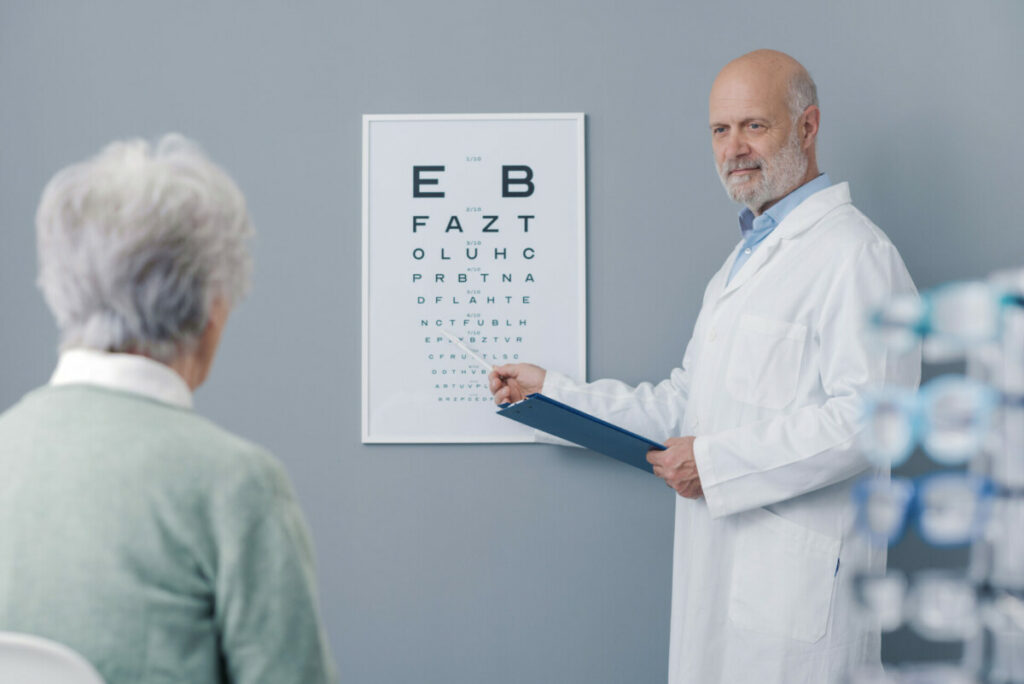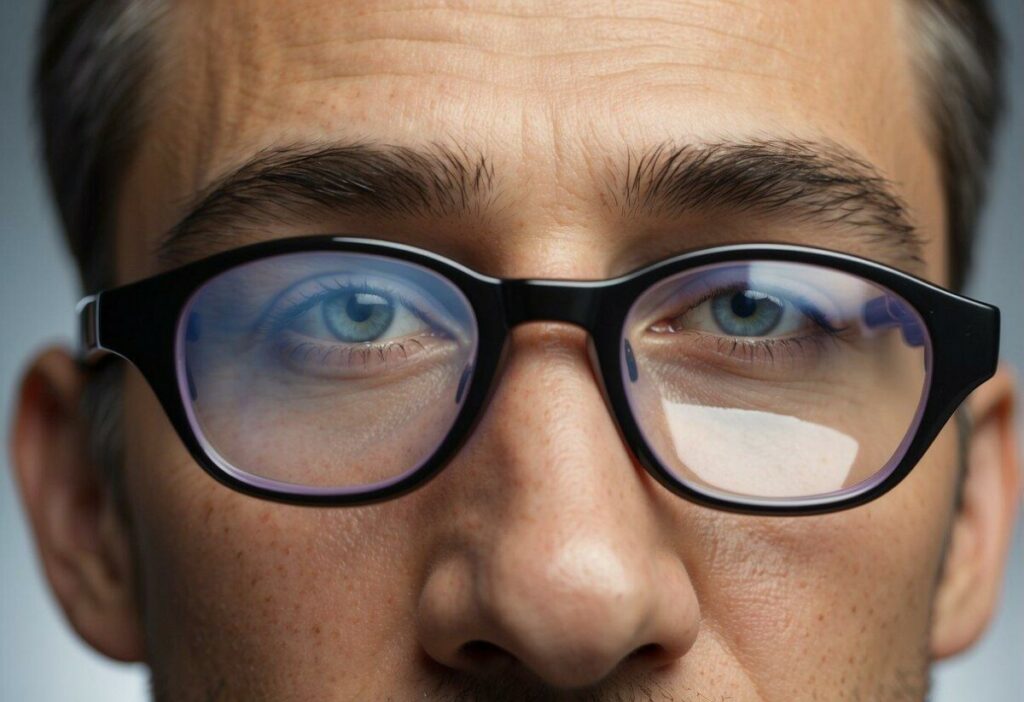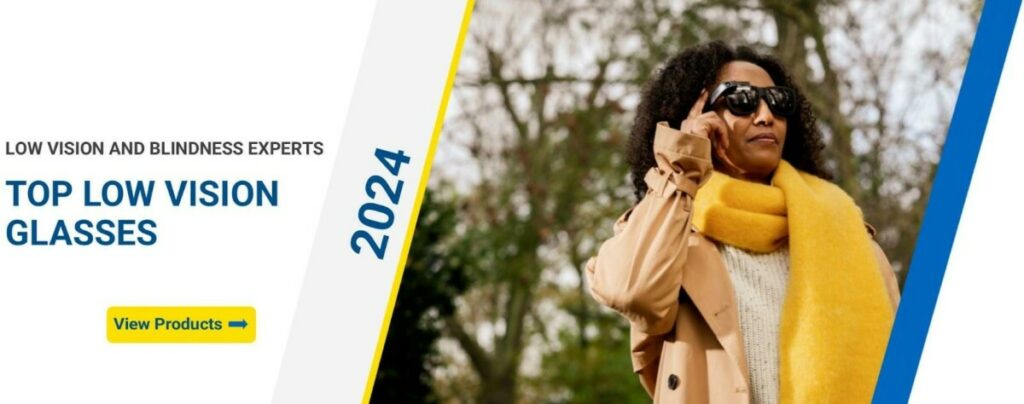Comprehensive Guide to Low Vision Glasses: Exploring Types, Uses, and Benefits
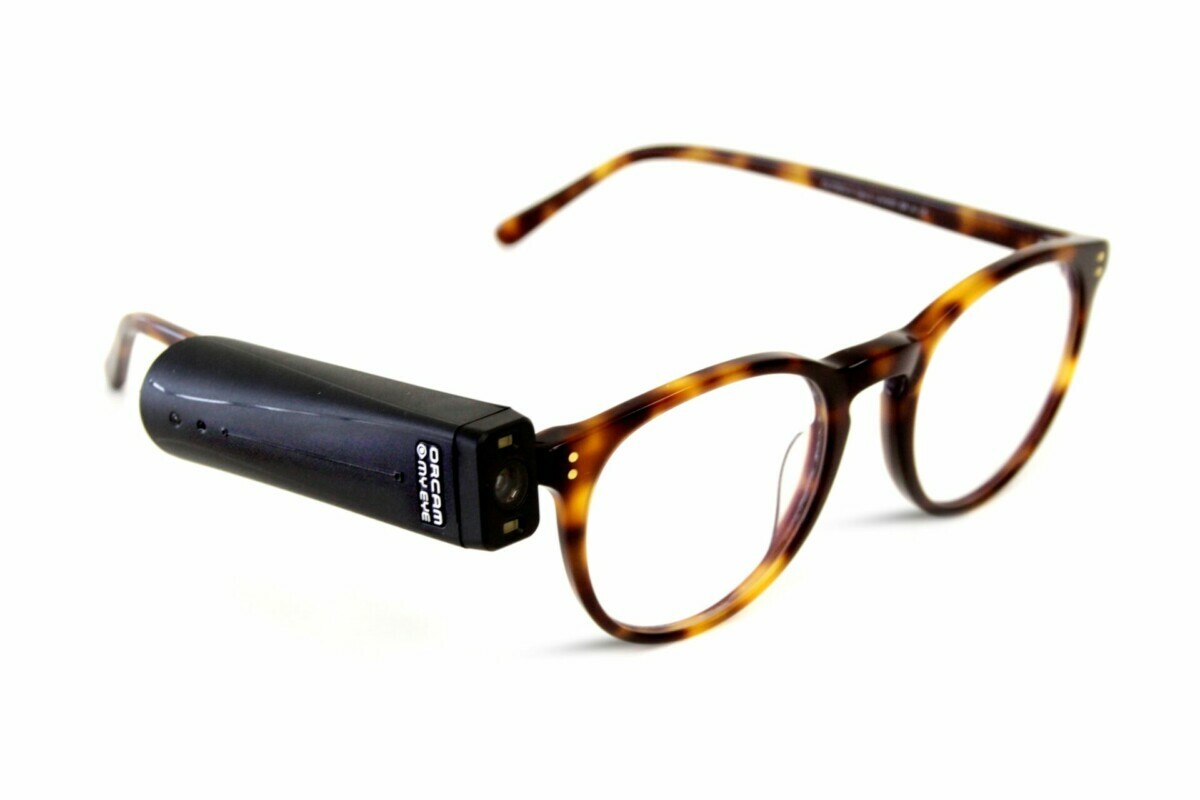
Welcome to our comprehensive guide to low vision glasses where we explore types and advantages, crafted to offer valuable insights and strategies for individuals navigating visual impairment. Low vision, impacting millions worldwide, encompasses a range of impairments that cannot be fully corrected. In this document, we delve into the various types of low vision glasses available, exploring their unique advantages and suitability for different needs. From magnifying lenses to specialized tinted glasses, we uncover how these tools can enhance visual function and quality of life. Whether personally affected or seeking understanding, this guide aims to illuminate the journey of living with visual impairment and empower individuals to make informed choices in selecting the most suitable low vision glasses.
Understanding Low Vision
Low vision affects a person’s ability to complete daily tasks, often caused by various eye conditions. It cannot be corrected by standard eyeglasses or contact lenses, making it imperative to explore specialized alternatives.
Definition and Causes of Low Vision
Low vision is a term used when visual impairment is severe enough that it cannot be fixed by prescription glasses, surgery, or medications. It implies that activities such as reading, recognizing faces, or driving are challenging. The common causes of low vision include eye conditions like macular degeneration, diabetic retinopathy, glaucoma, and cataracts. These conditions may affect central vision, contrast sensitivity, or distance vision.
Assessing Visual Acuity and Contrast Sensitivity
To determine the extent of low vision, we assess two critical aspects: visual acuity and contrast sensitivity. Visual acuity is measured to ascertain how well a person can see at various distances. It refers to the clarity or sharpness of vision, often represented as a fraction with a numerator and denominator, such as 20/70. Contrast sensitivity involves the ability to distinguish objects from their background, which is especially challenging in low-light conditions or when the objects and their backgrounds are similar in tone.
Learn more by visiting our selection of low vision wearable glasses.
Low Vision Glasses Overview
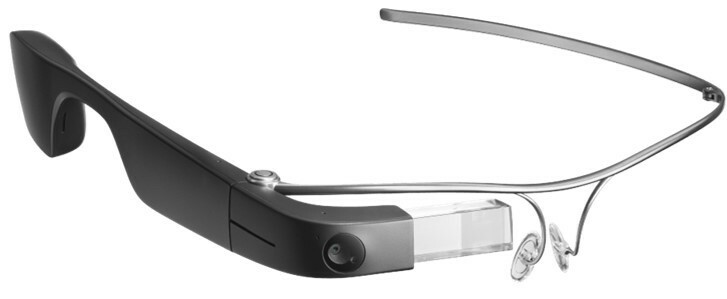
Low vision glasses significantly enhance visual performance for individuals with impaired sight. They are uniquely engineered, incorporating advanced technologies to address a variety of visual challenges.
What Are Low Vision Glasses?
Low vision glasses are specialized optical devices designed to maximize the remaining vision of individuals with visual impairments. Unlike standard prescription glasses that correct refractive errors, low vision glasses utilize various magnification methods and are tailored to an individual’s specific visual needs, effectively improving the quality of life for users facing challenges such as macular degeneration.
Differentiating Between Standard and Low Vision Glasses
Standard prescription glasses are primarily intended for people with common refractive errors such as myopia, hyperopia, and astigmatism, improving visual acuity through specific diopter adjustments. Low vision glasses, on the other hand, may incorporate tinted lenses to enhance contrast or have a unique lens design to redirect light to healthier parts of the retina, assisting those with central vision loss. For individuals requiring additional support while reading material, low vision optical devices like stand magnifiers or handheld magnifiers may be used to improve clarity and working distance, fulfilling tasks that regular spectacles cannot. For activities needing improved distance vision, like recognizing faces or signs, low vision aids can dramatically enhance a user’s capabilities.
Low vision encompasses a wide spectrum of visual conditions that traditional glasses can’t address, but with the support of low vision optical devices, we can unlock new possibilities for those affected. Discover how low vision devices can cater to specific needs by visiting our selection.
Types of Low Vision Glasses
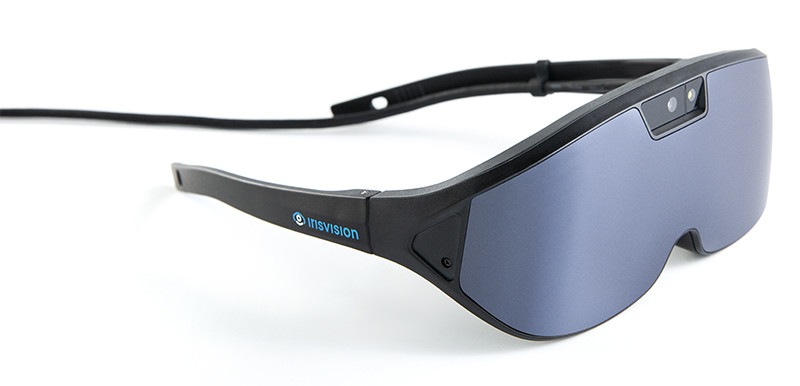
Low vision glasses come in a variety of types, each specifically designed to address different visual needs. These specialized glasses help maximize the remaining vision of individuals, enhancing their ability to perform daily tasks. In our selection, we provide different options suitable for various aspects of vision loss, giving you the independence and clarity you deserve.
Magnifying Reading Glasses
Our magnifying reading glasses are tailored for individuals who struggle with close-up tasks such as reading small print. These low vision optical devices have built-in magnification to help enlarge text, making reading material more accessible. With stand magnifiers included in some models, they can be particularly useful for activities like reading, writing, or any detailed work, significantly reducing eye strain while improving visual acuity.
Bioptic Telescopes
Bioptic telescopes are a game-changer for people with low vision, especially those with central vision loss often seen in macular degeneration. These glasses are fitted with miniature, small telescopes mounted on the lenses of prescription glasses. The telescopes allow users to switch focus between distance vision and the regular view, depending on the task at hand. We train individuals on how to best utilize these low vision aids for activities like recognizing faces and watching television.
Full-Diameter Telescopes
For those requiring an extensive field of view and improved distance vision, full-diameter telescopes are an incredible asset. These optical devices feature a larger objective lens compared to bioptic telescopes, offering a wider visual field. They are particularly ideal for static activities where the user is stationary, and the working distance from the visual target is consistent. The design offers a fuller, immersive experience, helping our clients with tasks ranging from enjoying the scenery to attending live events.
Each type of low vision glasses serves a unique purpose, aiding in various aspects of daily life for people facing challenges with their visual acuity and overall eye health. These low vision optical devices are more than just tools; they represent independence, confidence, and the possibility to engage with the world in a way that conventional optical devices cannot offer.
Learn more by visiting our selection of the top low vision wearable glasses.
Choosing Low Vision Devices

When it comes to enhancing vision for those with visual impairments, selecting the right low vision devices is crucial. These devices can significantly improve the quality of life by aiding daily tasks and increasing independence.
Determining the Right Device
Low vision optical devices have advanced significantly, allowing individuals with visual impairments to perform tasks that require both near and distance vision. To choose the right aid, one must consider the level of visual acuity, the type of visual impairment, and specific needs such as reading, writing, or navigating environments. For example, stand magnifiers are ideal for stationary tasks like reading a book, where a stable working distance is maintained. On the other hand, a handheld magnifier might be more suitable for quick spot-checks of reading material, carry-on for convenience, and adjustability.
When one experiences central vision loss typically associated with macular degeneration, devices that provide high levels of magnification are beneficial. These include electronic magnifiers that can display enhanced texts at variable magnifications. It’s essential to inspect the objective lens size and optical devices design for the right combination of magnification, illumination, and working distance to cater to their low vision.
Consulting a Low Vision Specialist
A low vision specialist is trained to identify the appropriate low vision optical devices tailored to an individual’s specific needs. They evaluate the person’s remaining vision, recommend low vision aids, and customize solutions such as low vision glasses. For instance, a specialist can prescribe prescription glasses with custom magnification or suggest telescopes for improved distance vision.
Consulting with us at New England Low Vision and Blindness, you’ll receive personalized attention to find the most suitable low vision devices. Our specialists are equipped with an array of leading-edge solutions from handheld to wearable technologies aimed at enhancing vision and day-to-day functioning.
Aiding in the selection of the ideal low vision device not only offers practicality but also instills confidence as one navigates through their environment with greater assurance.
Learn more by visiting our top low vision wearable glasses.
Aids for Daily Living
In support of individuals with low vision, we offer a range of devices tailored to enhance daily tasks such as reading and writing, as well as improving the ability to discern fine details through contrast enhancement.
Reading and Writing Solutions
When living with low vision, one of the significant challenges is dealing with text on various surfaces—whether it’s printed, handwritten, or on a digital screen. Thanks to low vision optical devices like reading glasses and stand magnifiers, these challenges can be addressed effectively. Reading glasses are custom made to enhance visual acuity, adjusting to the specific requirements of your central vision. They enable you to easily read books, view your computer screen, or manage small print documents.
Additionally, handheld magnifiers serve as versatile low vision aids for tasks that require mobility, such as reading labels while shopping. Stand magnifiers, on the other hand, are convenient for stationary tasks. These low vision devices offer a working distance that allows you to rest your hands while ensuring the text is clearly magnified.
Enhancing Contrast for Everyday Tasks
The ability to see contrast significantly affects how individuals with low vision interact with their environment. Low vision optical devices that enhance contrast can aid in a wide variety of everyday tasks. For instance, high-contrast low vision aids are instrumental for those with conditions like macular degeneration, where central vision is compromised.
By utilizing an objective lens with a high level of magnification, optical devices can improve the visibility of details by increasing the contrast between the object or text and its background. This contrast improvement is crucial for independence and safety, aiding in activities such as cooking, personal care, and navigating around the house. Low vision solutions tailored to distance vision can also assist in recognizing faces and signs, increasing social and environmental interactions.
We, at New England Low Vision and Blindness, believe that the right low vision optical devices can have a profound impact on daily living. By providing leading-edge solutions, we bring hope and empowerment back into the lives of those afflicted by low vision.
Learn more by visiting New England Low Vision and Blindness.
Technological Advances in Low Vision
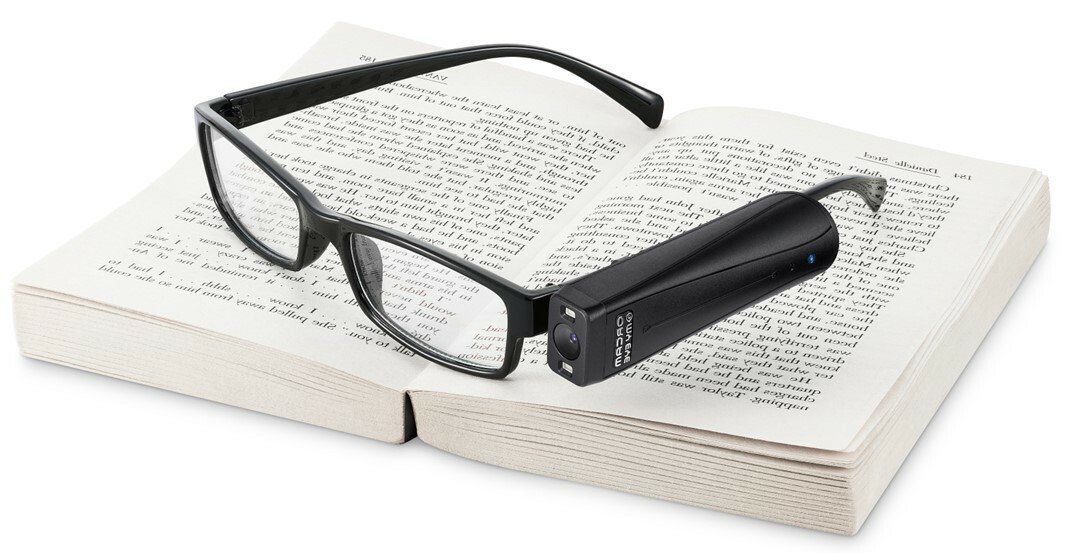
Advancements in technology are transforming the lives of individuals with low vision, offering innovative options that enhance visual acuity and enable greater independence.
Electronic Magnifiers
Electronic magnifiers, a category of low vision optical devices, utilize high-quality cameras and display technology to enlarge printed text and images. These video magnifiers cater to a range of low vision needs, including reading material and helping with daily tasks. Stand magnifiers have evolved, now offering adjustable working distances and high-resolution capabilities, making it possible to tailor magnification to individuals’ unique visual acuity requirements. Handheld magnifier models grant portability, aiding in tasks requiring a close working distance such as reading labels or menus.
Wearable Technology Solutions
Wearable technology solutions, including low vision glasses imbued with augmented reality and virtual reality glasses, are gaining prominence as low vision aids. They not only improve distance vision but also assist with central vision challenges caused by conditions like macular degeneration. Products like eSight harness leading-edge displays to enhance the remaining sight of users. Similarly, Orcam offers intelligent visual support, helping those with visual impairments interact with their environment more effectively. These wearable solutions can be thought of as sophisticated low vision optical devices, combining an objective lens system akin to prescription glasses with cutting-edge technology to empower users with improved visual acuity.
By utilizing such assistive technology, we help people with low vision reclaim independence and continue to engage in their favorite activities.
Learn more by visiting Top Low Vision Glasses.
Non-Optical Support for Low Vision
Non-optical devices play a significant role in enhancing the daily lives of individuals with low vision. By incorporating various forms of support beyond traditional low vision glasses, those affected can navigate the world with greater confidence and autonomy.
Orientation and Mobility Training
Orientation and Mobility Training is a critical component of the support system for individuals with low vision. This training teaches individuals how to travel safely and independently through their environment. White canes are instrumental non-optical devices in this respect, as they serve as a tool for tactile feedback and as a recognizable symbol of visual impairment. We ensure that clients receive comprehensive training to utilize white canes effectively, helping them to gauge their surroundings, detect obstacles, and maintain a straight path. Our low vision and blindness training services harness the power of one-on-one instruction to maximize independent travel skills.
Lifestyle Modifications
In addition to training programs, lifestyle modifications are vital for those adjusting to life with low vision. Simple adjustments in the home and workplace environment, such as improved lighting and organization, can profoundly increase safety and ease of performing tasks. Our team recommends non-optical low vision aids like high-contrast cutting boards, signature guides, and large-print labels to enhance everyday activities. By altering the environment and utilizing tools designed to support low vision needs, individuals can continue performing daily routines with greater ease and less strain on their vision.
Learn more by visiting our top low vision wearable glasses.
Protecting Eyes from Further Damage
In our efforts to assist those with low vision, we understand the critical role of protecting the eyes from further damage. It’s essential to manage external factors like harsh lighting and ultraviolet radiation, which can exacerbate existing conditions.
The Importance of Sunglasses
We advocate for the regular use of sunglasses which offer full UV protection. Such sunglasses shield the eyes from harmful rays that can accelerate conditions like macular degeneration. Whether reading material outdoors or navigating a wide field of view, sunglasses act as essential low vision aids, preserving both central vision and distance vision.
Key Features of Protective Sunglasses:
- Full UV protection
- Polarized lenses to reduce glare
- Wraparound designs for extended field of view
- Compatibility with prescription glasses
Avoiding Glare and Harsh Lighting
Managing glare is pivotal for those with low vision. Glare from sunlight or artificial light can severely restrict visual acuity. Low vision optical devices geared towards glare reduction can significantly enhance comfort and visibility. Stand magnifiers and handheld magnifiers often include built-in lighting to provide an evenly lit working distance, reducing strain and protecting the eyes.
Strategies to Reduce Glare:
- Use of anti-glare screen protectors on digital devices
- Strategic lighting that emphasizes indirect light for indoor environments
- Optical devices with specialized coatings to mitigate glare
Our assortment of low vision devices, from low vision glasses to complex low vision optical devices, is designed with the well-being of our clients in mind. Remember, by taking steps to protect your eyes today, you contribute to the longevity of your sight tomorrow.
Learn more by visiting New England Low Vision and Blindness.
Social and Emotional Impact of Low Vision
Low vision can significantly affect a person’s social interactions and emotional well-being. Understanding these impacts is crucial in enhancing the lives of those with low vision.
Improving Quality of Life
We recognize that maintaining quality of life is a primary concern for individuals with low vision. Low vision optical devices, such as stand magnifiers and low vision glasses, are designed to assist in daily activities that many of us take for granted. This includes the ability to read reading material with ease, recognizing faces, and engaging in hobbies. With improved functional low vision, individuals can experience a higher degree of independence and engagement, leading to enhanced social interaction and emotional health.
Setting Realistic Goals
Setting and achieving personal goals can be incredibly motivating for individuals with low vision. Whether it’s successfully navigating spaces with prescription glasses that are optimized for distance vision, or using a handheld magnifier to read fine print, these successes build confidence and autonomy. By providing leading-edge low vision aids, we aim to equip our clients with the tools they need to pursue their ambitions while managing expectations to maintain motivation.
Our involvement with our clients often goes beyond just the provision of low vision devices. Empowering individuals to set realistic and attainable goals, be it improving central vision functionality or adapting their living spaces with the right optical devices, is part of our commitment. Specifically, addressing macular degeneration, a common cause of vision loss, with appropriate optical devices like stand magnifiers, or ensuring a comfortable working distance with low vision optical devices for different activities, can greatly improve one’s ability to perform everyday tasks.
By enhancing both practical and emotional aspects of living with low vision through the use of low vision optical devices, we help individuals rediscover their self-reliance and joy in life.
Learn more by visiting our top low vision wearable glasses.

